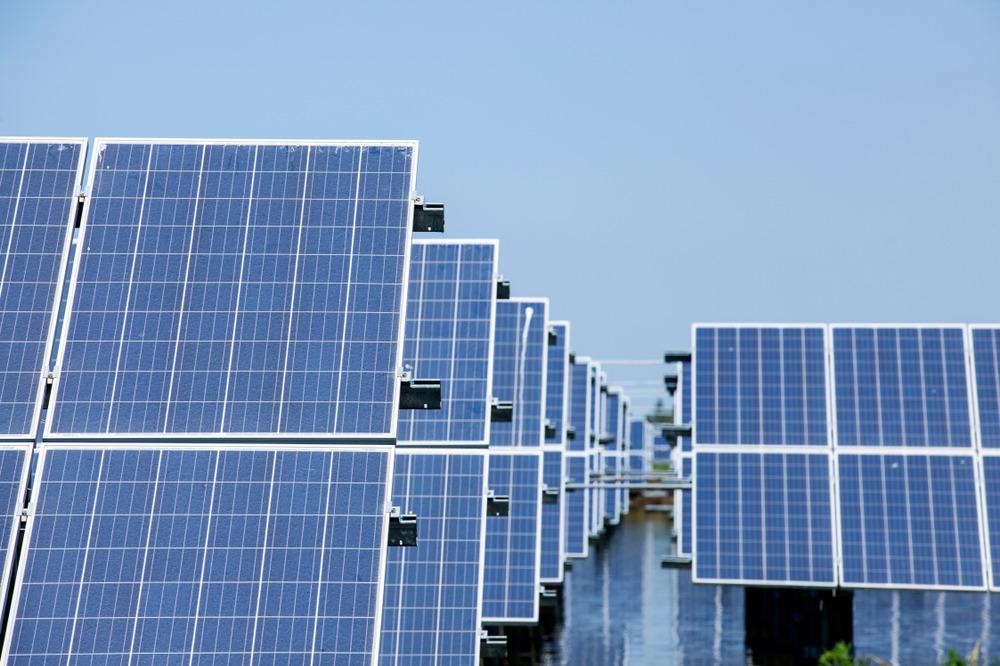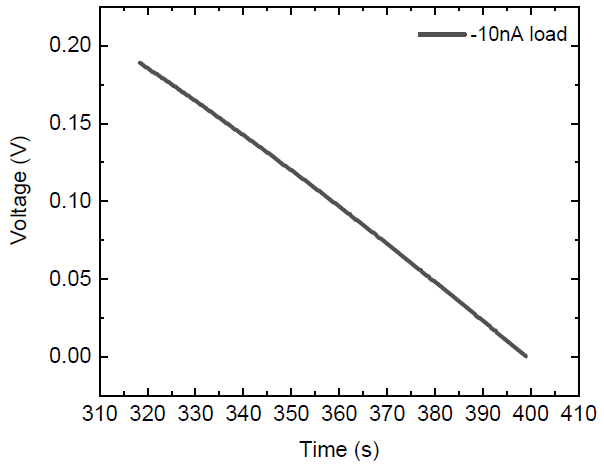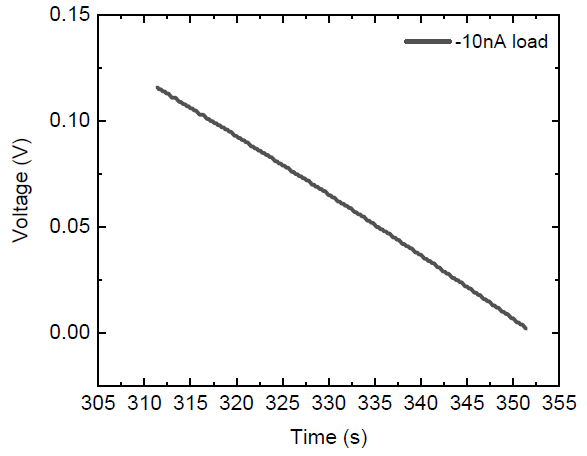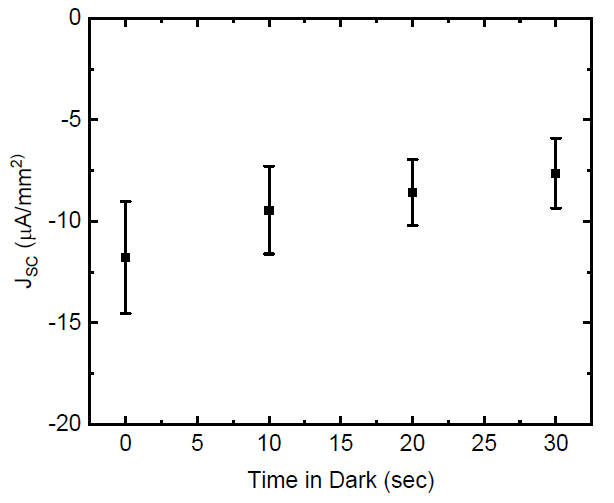 By Surbhi JainReviewed by Susha Cheriyedath, M.Sc.May 27 2022
By Surbhi JainReviewed by Susha Cheriyedath, M.Sc.May 27 2022In an article recently published in the journal ACS Applied Energy Materials, researchers discussed the conversion of solar cells into photocapacitors without the use of additional capacitive components.

Study: Converting Solar Cells to Photocapacitors without the Incorporation of Additional Capacitive Components. Image Credit: zhengzaishuru/Shutterstock.com
Background
Photocapacitors are appealing as power sources in applications where charging with light is preferable to charging with electricity. The majority of photocapacitors include both a capacitor and a solar cell. Because ordinary solar cells cannot keep the photogenerated charges in the dark and capacitors cannot create charges through light, a multi-component device architecture is necessary. However, adding extra capacitive units to a solar cell, such as high-surface-area charge storage electrodes and dielectrics, might result in more complicated or incompatible production methods and higher material costs.
Minimal device size with fewer components is needed for medical applications like optogenetics, where light-induced nerve stimulations or neurons can be carried out via photocapacitors. To reduce device complexity, photocapacitors typically use a single donor-acceptor solar cell configuration. However, the performance of such capacitors is inferior to that of the hybrid system, particularly in terms of the charge retention time.

Discharge under load curve used for estimating the photocapacitor’s capacitance. Image Credit: Yeow, Q. J. et al., ACS Applied Energy Materials
About the Study
In this study, the authors discussed how dye-sensitized solar cells could be easily regulated to operate as a capacitor without the requirement of the installation of extra capacitive components. This was accomplished by effective limitation of the cells' rapid charge recombination in the dark and reduction in the self-discharging caused by excessive electron leakage within the device.
The elimination of oxidizing species that could operate as recombination centers in the electrolyte, as well as the right selection of reducing agents with redox potentials providing low dye regeneration rates, were used to achieve this property.
The team demonstrated the capability of a near-infrared (n-IR) solar cell photocapacitor as a wirelessly and non-invasively charging power source for medical applications. The basic electron transport mechanisms taking place in the illuminated dye-sensitized solar cell (DSSC) were summarized to explain the genesis of this self-discharging.
Photons were absorbed by the photoactive dye molecule, which excited an electron from the highest occupied molecular orbital (HOMO) to the lowest unoccupied molecular orbital (LUMO). The excited electrons in the LUMO were injected into the conduction band of the TiO2 photoanode.
The researchers proposed a method for the removal of all oxidizing substances from the electrolyte in the dark, which reduced the number of recombination centers after light exposure.

Discharge under load curve used for estimating the n-IR photocapacitor’s capacitance. Image Credit: Yeow, Q. J. et al., ACS Applied Energy Materials
Observations
During a 17-hour self-discharging time in the dark, the photocapacitor retained around 22.6% of the maximum VOC. During a 17-hour self-discharging time in the dark, the device retained around 54% of the maximum VOC. The cell's capacitance was determined to be 1.4 mF cm-2 when a current of -10 nA was applied. The gadget achieved a maximum discharge current density JSC of -11.11 μA mm-2 under short-circuit in the dark when fully charged at 275 mW cm-2 and simultaneously open-circuited for 120 s. Furthermore, after 32 cycles of charging at 275 mW cm-2 and discharging in the dark under a -100 nA extraction current, the n-IR photocapacitor was stable and preserved its VOC.
The prepared solar cell photocapacitor provided for easier device construction and performance management, as well as lower material costs. DSSCs with mesoporous high-surface-area TiO2 photoanodes that could also serve as high-density charge storage electrodes attained this property.
The oxidized dye molecule regained an electron from the nearby reducing agent in the corresponding electrolyte to continue the collection of photons and injection of electrons into the TiO2 photoanode. After transferring an electron to the oxidized dye, the reducing agent converted to an oxidizing agent. Electrons in the TiO2 layer could migrate to nearby oxidized shuttles at the TiO2 surface. Charge recombination, an electron loss mechanism, lowered the density of charge carriers within the photoanode and lowered the quasi-Fermi level EF. As a result, the open-circuit potential VOC decreased.

JSC delivered by the near infrared light charged photocapacitor after various storage times in the dark. Charging was carried out at 275 mW/cm2 740 nm peak n-IR irradiance at open circuit for 120 s. Image Credit: Yeow, Q. J. et al., ACS Applied Energy Materials
Conclusions
In conclusion, this study showed that solar cells could be transformed into photocapacitors with simple electrochemical adjustments rather than the addition of additional capacitive components. It was discovered that suppressing charge recombination is critical for achieving capacitor behavior by reducing the rapid self-discharging in DSSCs.
The most important strategy was to reduce the presence of oxidizing species in the electrolyte that acted as recombination centers. Furthermore, dye regeneration rates should be lowered so that fewer oxidizing agents and hence recombination centers were created while charging by light.
This could be accomplished by selecting the correct redox potential for the reducing shuttle. The authors emphasized that the proposed low-cost near-infrared solar cell photocapacitors are ideal for applications that require few components and simple device architecture, such as implants in a variety of biomedical fields like light-induced neuron stimulation in optogenetics or infrared light chargeable auxiliary power sources for pacemakers.
Disclaimer: The views expressed here are those of the author expressed in their private capacity and do not necessarily represent the views of AZoM.com Limited T/A AZoNetwork the owner and operator of this website. This disclaimer forms part of the Terms and conditions of use of this website.
Source:
Yeow, Q. J., Cuhadar, C., Tay, W. K., et al. Converting Solar Cells to Photocapacitors without the Incorporation of Additional Capacitive Components. ACS Applied Energy Materials (2022). https://pubs.acs.org/doi/10.1021/acsaem.2c00351